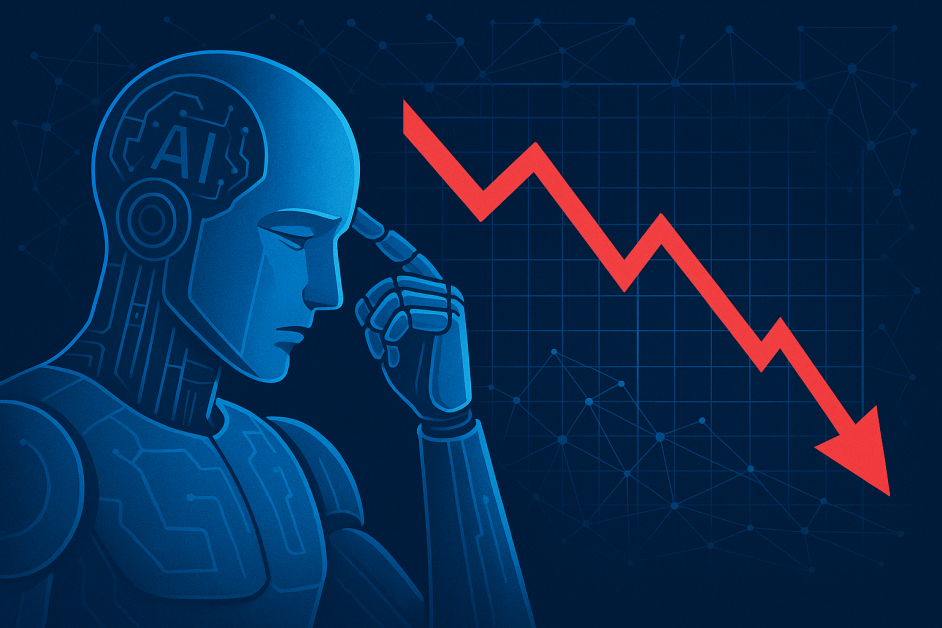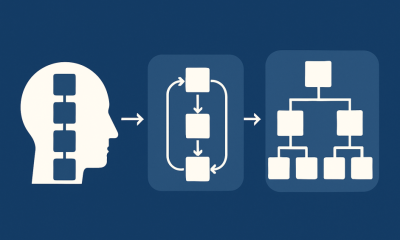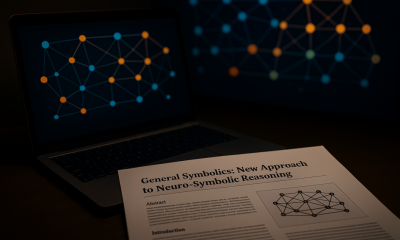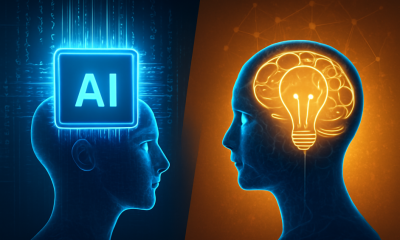Artificial Intelligence
When More Thinking Makes AI Dumber: The Inverse Scaling Paradox

Artificial intelligence has been built on the idea that giving machines more time, data, and computing power improves their performance. This belief has guided the direction of AI research and development for many years. The key assumption underlying this belief is that larger models and more resources would create more intelligent systems. However, recent research has started to question this approach. Large language models, like OpenAI’s o1 series, Anthropic’s Claude, and DeepSeek’s R1, were built to solve problems step by step, much like human reasoning. Researchers expected that giving these models more time to think and process information would improve their decision making. However, new studies show that the opposite can happen. When you provide these models with more time to think, they sometimes perform worse, especially on simple tasks. This effect is called inverse scaling. It challenges the belief that more computing power and deeper reasoning always lead to better results. These findings have significant consequences for how we design and use AI in real-world situations.
Understanding the Inverse Scaling Phenomenon
The “inverse scaling” phenomenon was initially discovered through controlled experiments by researchers at Anthropic. Unlike traditional scaling laws, which say more computation improves performance, these studies found that giving AI more time to reason can lower its accuracy on different tasks.
The research team created tasks in four areas: simple counting with distractions, regression with irrelevant features, deduction with constraint tracking, and complex AI safety scenarios. The results were surprising. In some cases, models that first gave correct answers started giving wrong ones after being given more time to process.
For example, in a simple counting task like “How many fruits do you have if you have an apple and an orange?”, Claude models often got distracted by extra details when given more time to reason. They failed to provide the correct answer, which is two. In these cases, the models were overthinking and ended up making mistakes.
Apple’s recent research also supported these findings. They performed their experiments in controlled puzzle environments like the Tower of Hanoi and the River Crossing, rather than on standard benchmarks. Their studies showed three patterns: in simple tasks, standard AI models did better than reasoning models; in medium tasks, reasoning models had an advantage; and in very complex tasks, both types of models failed.
The Five Ways AI Reasoning Fails
Researchers have found five common ways AI models can fail when they reason for more extended periods:
- Distraction by Irrelevance: When AI models think for too long, they often get distracted by details that do not matter. This is like a student who misses the main point of a problem while thinking deeply on the problem.
- Overfitting to Problem Frames: Some models, like OpenAI’s o-series, focus too much on problem presentation. While they avoid distractions, they are not flexible and rely on problem formulation.
- Spurious Correlation Shift: Over time, AI models may shift from reasonable assumptions to relying on misleading correlations. For example, in regression tasks, models first consider relevant features but when they as given more time to think, they may start to focus on irrelevant features and give incorrect results.
- Focus Degradation: As tasks get more complex, AI models find it harder to keep their reasoning clear and focused.
- Amplified Concerning Behaviors: More time to reason can make negative behaviors worse. For instance, Claude’s Sonnet 4 showed stronger self-preservation tendencies when given extra time to think about shutdown scenarios.
How AI Reasoning Tackles Problem Complexity
Apple researchers introduced the term “illusion of thinking” to explain what happens when reasoning models face tasks with different levels of complexity. Instead of focusing on math problems or coding tests, they tested AI reasoning models in controlled puzzle environments like Tower of Hanoi, Checker Jumping, River Crossing, and Blocks World. By slowly increasing the difficulty of these puzzles, they could see how the models performed at each level. This method helped them examine not just the final answers, but also how the models reached those answers. The study found three clear patterns in model performance based on problem complexity:
- For simple puzzles like the Tower of Hanoi with one or two disks, standard large language models (LLMs) gave correct answers more efficiently. AI reasoning models often made things too complicated through their long reasoning chains, which often results in incorrect answers.
- In moderately complex puzzles, AI reasoning performs better. They could break down problems into clear steps, which helped them solve multi-step challenges more effectively than standard LLMs.
- In very complex puzzles, like the Tower of Hanoi with many disks, both types of models struggled. The reasoning models often reduced their reasoning effort as the puzzle got harder, even though they had enough computational resources. This “giving up” behavior shows a key weakness in scaling their reasoning.
The Challenge of AI Evaluation
The inverse scaling phenomenon shows significant problems in how we evaluate AI models. Many current benchmarks measure only the accuracy of final answers, not the quality of the reasoning process. This can lead to a false sense of a model’s real abilities. A model might do well on tests but still fail with new or unusual problems.
Inverse scaling also points out weaknesses in reasoning benchmarks and how we use them. Many models use shortcuts and pattern recognition instead of true reasoning. This can make them look smarter than they actually are, but their performance often drops in real-world situations. This problem is related to larger issues with AI, such as hallucinations and reliability. As models get better at producing explanations that sound convincing, it becomes more difficult to differentiate real reasoning from made-up answers.
The Future of AI Reasoning
The inverse scaling paradox is both a challenge and an opportunity for AI. It shows that adding more computing power does not always make AI smarter. We need to rethink how we design and train AI systems that could handle problems with varying complexities. New models may need to decide when to pause and think and when to respond quickly. In this regards, AI could benefit from cognitive architecture such as dual process theory as a guiding principles. These architectures explain how human thinking mixes fast, instinctive reactions with slow, careful reasoning. The inverse scaling also reminds us that we must fully understand how AI makes decisions before using it in critical areas. As AI is used more for decision making in areas like healthcare, law and business, it becomes even more crucial to make sure these systems reason correctly.
The Bottom Line
The inverse scaling paradox teaches us an essential lesson in AI development. More time and computing power do not always make AI more competent or more reliable. Real progress comes from understanding when AI should reason and knowing its limits. For organizations and researchers, it is essential to use AI as a tool, not as a substitute for human judgment. It is necessary to choose the right model for each task. As AI becomes part of important decisions, we must carefully evaluate its strengths and weaknesses. The future of AI depends on thinking correctly, not just thinking more.












